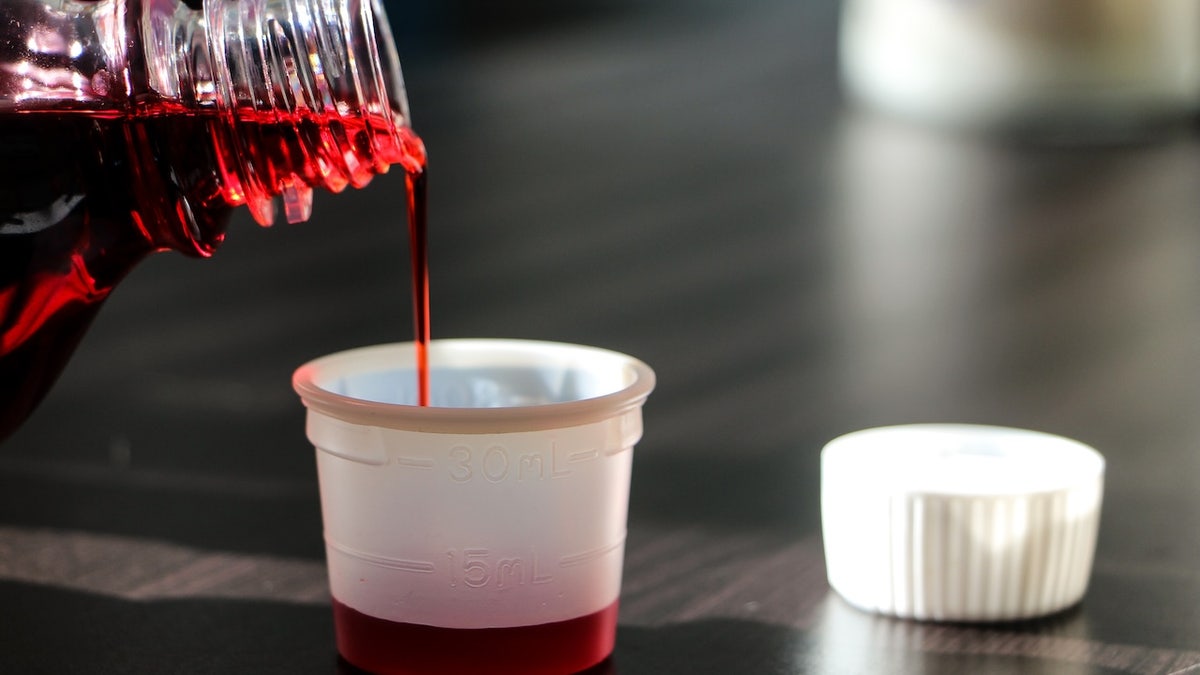Health
Be well: 6 tips to preserve your knees as long as possible after an arthritis diagnosis

About one in four U.S. adults has been diagnosed with arthritis, according to the CDC — and the knee is the joint that is most commonly affected.
With arthritis of the knee, the cartilage gradually breaks down until bone is rubbing directly on bone.
“When the bones in the knee joint rub together, it causes friction that makes the knees hurt, become stiff or swell,” said Dr. Nakul Karkare, a joint replacement surgeon at Complete Orthopedics in New York.
ASTHMA AND ECZEMA COULD INCREASE RISK OF OSTEOARTHRITIS, STUDY FINDS
Although there is no cure for arthritis, there are treatments that can relieve symptoms and slow the condition’s progress.
Fox News Digital spoke to the doctor, who shared six tips to help preserve the knees as long as possible after an arthritis diagnosis.
1. Maintain a healthy weight
The more you weigh, the more weight must be supported through your knees, said Karkare.
About one in four U.S. adults has been diagnosed with arthritis, per the CDC — and the knee is the joint that is most commonly affected. (iStock)
“This additional strain on your knees exacerbates arthritis symptoms,” he said. “Losing weight through a balanced diet and regular exercise can help relieve stress on your knees.”
2. Stay active
Arthritis can lead to a sedentary lifestyle, which can contribute to weight gain and increased pain, the doctor said.
To break this vicious cycle, he recommended trying low-impact exercises like swimming, cycling and walking.
THESE ADULT VACCINES COULD REDUCE SENIORS’ RISK OF ALZHEIMER’S, STUDY FINDS: ‘HEIGHTENED IMMUNE RESPONSE’
“These activities can help strengthen the muscles around your knees without putting excessive pressure on the joints,” he said.
“If cycling causes soreness in front of the knee, try moving the seat up to decrease the stress on the underside of the knee cap.”
Engaging in regular strength training can also help stabilize the knees, said Karkare.

Engaging in regular strength training can also help stabilize the knees, said Karkare. (iStock)
He said focusing on exercises that target the quadriceps, hamstrings and calf muscles can provide better support to the joint.
“Before exercising, make sure to warm up and perform gentle stretches,” the doctor suggested. “This can help improve flexibility and reduce the risk of injury.”
High-impact exercises such as running or jumping should be avoided, as these can worsen knee pain.
3. Use assistive devices and braces
Although many people resist using a cane due to associations with aging and disability, canes can benefit individuals with hip or knee pain, enhancing stability and comfort, the doctor said.
BE WELL: PREVENT DANGEROUS FALLS AMONG OLDER ADULTS BY TAKING KEY STEPS
He recommended using a cane on the opposite side of the affected joint, which will reduce pressure, aid movement and minimize pain flare-ups during activities like shopping.
Walkers and canes also help to prevent falls, while braces can correct flexible deformities and alleviate knee pain.
4. Choose supportive footwear
Wearing shoes with proper cushioning and arch support can help absorb shock and reduce strain on the knees, Karkare said.

Those with arthritis should try low-impact exercises like swimming, cycling and walking, said a joint replacement surgeon in New York. (Cyberguy.com)
“If you have flat feet, custom orthotics from your podiatrist will improve limb alignment,” he added.
5. Try injections for pain relief
There are two types of injections for arthritis pain relief: gel and cortisone.
Cortisone injections, which contain synthetic corticosteroids, swiftly reduce inflammation, said Karkare.
MOST SENIORS IN AMERICA CAN’T AFFORD NURSING HOMES OR ASSISTED LIVING, STUDY FINDS
In contrast, “gel” or “rooster comb” injections, which use hyaluronic acid, have a different mechanism of action — they are intended to alleviate joint pain and enhance mobility in osteoarthritis patients.
“While there is significant interest in injection using platelet-rich plasma and stem cells, further research is required to establish their effectiveness,” Karkare said.
“Moreover, these injections are not covered by insurance.”
6. Stay informed
When arthritis pain no longer responds to other treatments, Karkare said some newer, minimally invasive surgical techniques are available.

There are two types of injections for arthritis pain relief: gel and cortisone. (iStock)
“As an example, custom knee replacement is a surgical technique that involves replacing a damaged knee joint with a custom-designed implant through smaller incisions, minimizing tissue damage,” he said.
CLICK HERE TO SIGN UP FOR OUR HEALTH NEWSLETTER
“This approach aims to improve implant fit and alignment by using advanced imaging to create a personalized 3D model of the patient’s knee.”
The benefits of this procedure may include quicker recovery, reduced post-operative pain and potentially better long-term outcomes, he said.
Approximately 43% of people with osteoarthritis in the U.S. are 65 or older, while 88% are 45 or older, according to the Osteoarthritis Action Alliance.
For knee arthritis, however, the annual incidence is highest between 55 and 64 years old.
More than half of individuals with symptomatic arthritis of the knee are younger than 65.
To read more pieces in Fox News Digital’s “Be Well” series, click here.

Health
Treating Other Diseases With Ozempic? Experts Weigh In | Woman's World

Sign Up
Create a free account to access exclusive content, play games, solve puzzles, test your pop-culture knowledge and receive special offers.
Already have an account? Login
Use left and right arrow keys to navigate between menu items.
Use escape to exit the menu.
Health
FDA bans red food dye due to potential cancer risk

FDA looks to ban red food dye
Celebrity fitness trainer Jillian Michaels joins ‘Hannity’ to discuss the possibility of the FDA banning red food dye.
The U.S. Food and Drug Administration (FDA) has officially banned red dye — called Red 3, or Erythrosine — from foods, dietary supplements and ingested medicines, as reported by the Associated Press on Wednesday.
Food manufacturers must remove the dye from their products by January 2027, while drug manufacturers will have until January 2028 to do so, AP stated.
Any foods imported into the U.S. from other countries will also be subject to the new regulation.
RED FOOD DYE COULD SOON BE BANNED AS FDA REVIEWS PETITION
“The FDA is taking action that will remove the authorization for the use of FD&C Red No. 3 in food and ingested drugs,” said Jim Jones, the FDA’s deputy commissioner for human foods, in a statement.
The U.S. Food and Drug Administration has officially banned red dye — called Red 3, or Erythrosine — from foods, dietary supplements and ingested medicines (iStock)
“Evidence shows cancer in laboratory male rats exposed to high levels of FD&C Red No.3,” he continued. “Importantly, the way that FD&C Red No. 3 causes cancer in male rats does not occur in humans.”
The synthetic dye, which is made from petroleum, is used as a color additive in food and ingested drugs to give them a “bright cherry-red color,” according to an online statement from the FDA.

Food manufacturers must remove the dye from their products by January 2027, while drug manufacturers will have until January 2028 to do so. (iStock)
The petition to ban the dye cited the Delaney Clause, which states that the agency cannot classify a color additive as safe if it has been found to induce cancer in humans or animals.
The dye was removed from cosmetics nearly 35 years ago due to potential cancer risk.
CLICK HERE TO SIGN UP FOR OUR HEALTH NEWSLETTER
“This is a welcome, but long overdue, action from the FDA: removing the unsustainable double standard in which Red 3 was banned from lipstick but permitted in candy,” said Dr. Peter Lurie, director of the group Center for Science in the Public Interest, which led the petition effort, as reported by AP.

Nearly 3,000 foods are shown to contain Red No. 3, according to Food Scores, a database of foods compiled by the Environmental Working Group. (iStock)
Dr. Marc Siegel, clinical professor of medicine at NYU Langone Health and Fox News senior medical analyst, applauded the FDA’s ban.
“It was a long time coming,” he told Fox News Digital. “It’s been more than 30 years since it was banned from cosmetics in the U.S. due to evidence that it is carcinogenic in high doses in lab rats. There needs to be a consistency between what we put on our skin and what we put into our mouths.”
“There needs to be a consistency between what we put on our skin and what we put into our mouths.”
Siegel said he believes the FDA’s decision could be tied to the incoming new head of the Department of Health and Human Services, Robert F. Kennedy Jr.
“They knew it would have happened anyway under RFK Jr.,” he said. “It is already banned or severely restricted in Australia, Japan and the European Union.”

The food additive also “drew kids in” to a diet of empty calories and ultraprocessed foods, one doctor stated. (iStock)
The food additive also “drew kids in” to a diet of empty calories and ultraprocessed foods, Siegel added.
“It has also been linked to behavioral issues in children, including ADHD.”
Nearly 3,000 foods are shown to contain Red No. 3, according to Food Scores, a database of foods compiled by the Environmental Working Group.
For more Health articles, visit www.foxnews.com/health
The National Confectioners Association provided the below statement to Fox News Digital.
“Food safety is the number one priority for U.S. confectionery companies, and we will continue to follow and comply with FDA’s guidance and safety standards.”
The petition to remove Red No. 3 from foods, supplements and medications was presented in 2022 by the Center for Science in the Public Interest and 23 other organizations and scientists.
Health
How Yvette Nicole Brown Lost Weight and Got Her Diabetes Under Control

Sign Up
Create a free account to access exclusive content, play games, solve puzzles, test your pop-culture knowledge and receive special offers.
Already have an account? Login
Use left and right arrow keys to navigate between menu items.
Use escape to exit the menu.
-
/cdn.vox-cdn.com/uploads/chorus_asset/file/25822586/STK169_ZUCKERBERG_MAGA_STKS491_CVIRGINIA_A.jpg)
/cdn.vox-cdn.com/uploads/chorus_asset/file/25822586/STK169_ZUCKERBERG_MAGA_STKS491_CVIRGINIA_A.jpg) Technology1 week ago
Technology1 week agoMeta is highlighting a splintering global approach to online speech
-

 Science7 days ago
Science7 days agoMetro will offer free rides in L.A. through Sunday due to fires
-
/cdn.vox-cdn.com/uploads/chorus_asset/file/23935558/acastro_STK103__01.jpg)
/cdn.vox-cdn.com/uploads/chorus_asset/file/23935558/acastro_STK103__01.jpg) Technology6 days ago
Technology6 days agoAmazon Prime will shut down its clothing try-on program
-

 News1 week ago
News1 week agoMapping the Damage From the Palisades Fire
-

 News1 week ago
News1 week agoMourners Defy Subfreezing Temperatures to Honor Jimmy Carter at the Capitol
-
/cdn.vox-cdn.com/uploads/chorus_asset/file/25826211/lorealcellbioprint.jpg)
/cdn.vox-cdn.com/uploads/chorus_asset/file/25826211/lorealcellbioprint.jpg) Technology6 days ago
Technology6 days agoL’Oréal’s new skincare gadget told me I should try retinol
-
/cdn.vox-cdn.com/uploads/chorus_asset/file/25832751/2192581677.jpg)
/cdn.vox-cdn.com/uploads/chorus_asset/file/25832751/2192581677.jpg) Technology3 days ago
Technology3 days agoSuper Bowl LIX will stream for free on Tubi
-

 Business4 days ago
Business4 days agoWhy TikTok Users Are Downloading ‘Red Note,’ the Chinese App















